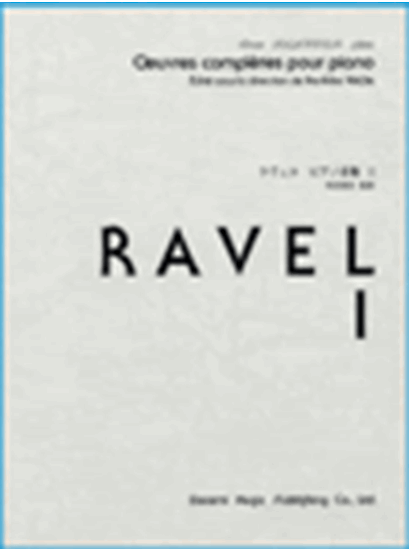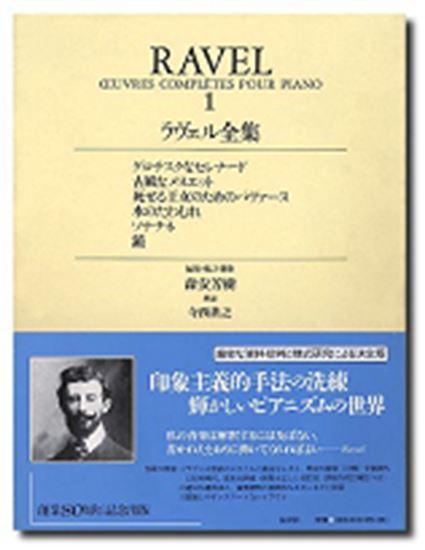Ravel, Maurice : Jeux d'eau E-Dur
Work Overview
Publication Year:1902
First Publisher:Demets
Instrumentation:Piano Solo
Genre:character pieces
Total Playing Time:6 min 00 sec
Copyright:Public Domain
Commentary (1)
Author : Yasukawa, Tomoko
Last Updated: September 1, 2009
[Open]
Author : Yasukawa, Tomoko
Composed in 1901, Jeux d'eau can be considered a culmination of Ravel's time at the Paris Conservatoire, as well as a pivotal work that allowed him to sublimate the influences of Liszt, Chabrier and others into his own unique style. The work was dedicated to Gabriel Fauré, his composition teacher at the Conservatoire, and premiered in 1902 by his classmate Ricardo Viñes at the Société Nationale de Musique.
Prior to Jeux d'eau, Ravel's piano solo works, such as Sérénade grotesque, Menuet antique, and Pavane pour une infante défunte, all feature characteristic adjectives appended to classical forms. This is likely strongly influenced by Chabrier's Trois valses romantiques—a piece Ravel performed with Viñes in front of the composer—and Bourrée fantasque. The fusion of poetic description and classical form is further advanced and expressed in Jeux d'eau. While the title is inspired by Liszt's Les jeux d'eaux à la Villa d'Este(from Années de pèlerinage, Troisième année), the score's opening bears the text "Dieu fluvial riant de l'eau qui le chatouille..." (River god laughing at the water that tickles him...) quoted from Henri de Régnier's poem "Fête d'eau" (Water Festival). Ravel himself seems to have intended the term Jeux d'eau to express not so much the fountain itself, but rather the changing colors and sounds of water as light plays upon it.
The regular rhythm and formality of a fountain controlling the play of water are expressed through the steady movement of eighth notes and the principles of sonata form. The harmonies, which deviate from strict tonal progression, brilliantly reproduce the ever-changing colors and sounds of water. Following a graceful first theme (from m. 1) based on arpeggiated seventh or ninth chords, a distinctive second theme (from m. 19, left hand) creating a pentatonic sound, and decorative transitional and development sections employing augmented intervals, chromatic scales, arpeggios, and chords, the recapitulation beginning at m. 62 sees the first theme enveloped by a new G-sharp pedal point. Dissonances and bitonality create captivating mixed colors through the effect of the pedal, from which occasional oriental motifs emerge. This constitutes a sound palette distinct from Liszt's virtuosity.
Arrangements & Related Works(1)
Sciarrino, Salvatore: ''Anamorfosi'' per pianoforte
Composition Year: 1980 Total Performance Time: 3 min 00 sec
PTNA & Partner Channel Videos(13items) View More
Sheet Music
Scores List (16)

KMP(ケイ・エム・ピー) ケイエムピー

ハンナ(ショパン)

(株)ヤマハミュージックエンタテインメントホールディングス

(株)音楽之友社

(株)ドレミ楽譜出版社

(株)全音楽譜出版社

(株)リットーミュージック

(株)ヤマハミュージックエンタテインメントホールディングス

(株)ドレミ楽譜出版社

ハンナ(ショパン)

ハンナ(ショパン)

(株)全音楽譜出版社

(株)ドレミ楽譜出版社

(株)春秋社

(株)ヤマハミュージックエンタテインメントホールディングス

(株)ヤマハミュージックエンタテインメントホールディングス















